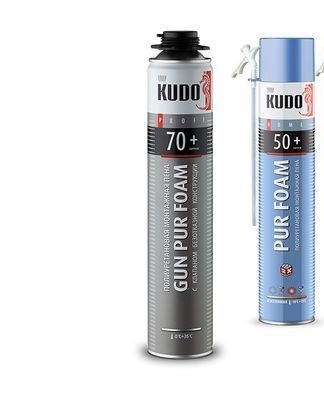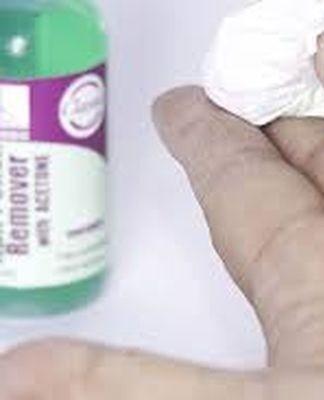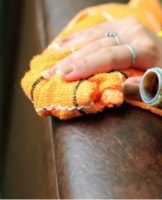TOP 11 tools and methods for quickly washing polyurethane foam from your hands
Using construction foam, you need to know how to wash it off the skin of your hands. Simple methods will help you quickly cope with the problem, effectively clean your hands without damaging your skin. After removing the contamination in any way, the hands should be treated with a fat cream, soothing the irritated skin with foam.
Ways to flush the toilet at home
When working with polyurethane foam, you should protect your hands with gloves. If, nevertheless, the material is on the skin, it is necessary to wipe it off as soon as possible, since fresh traces can be removed even with wet wipes. The stain is rubbed from the edges to the center so as not to enlarge the affected area.
Vegetable oil
The oil is absolutely harmless to the skin, unlike more aggressive professional solvents. For greater efficiency and quick achievement of the result, the oil is heated slightly, but not too much, in order to avoid burns.
The product is soaked in a towel and placed on the stain for exposure.If you keep the oil compress longer, you can remove the sealant, even if it is dry.
Special solvent
When buying foam, it is advisable to take a special solvent from the same manufacturer. Most often, they are in the form of an aerosol and adapt well to fresh traces, but are practically powerless compared to dried traces.
Tytan
The stores carry a wide range of Tytan Polish products, including building foams and their removers. The manufacturer produces universal products for removing uncured and hardened foam from various surfaces.
Master Bau
The cleaner from a Russian manufacturer does not contain aggressive components, it gently cleans various surfaces from fresh building foam, including the skin of hands and clothes. This gentle product does not cause mechanical or chemical damage.
Soudal
Soudal has been producing polyurethane foams, sealants, adhesives and roofing sealants for over 50 years. A cleaner from this manufacturer will remove fresh dirt from typical construction tools, surfaces and hands. The optional tube applicator ensures precise and economical dosing.
Kudo foam remover
Polyurethane foam remover from the Russian company KUDO, produced at a plant near Moscow, will remove the remains of hardened foam. Designed specifically for cleaning window frames, door frames, window sills. It takes up to half an hour to soften the foam, after which the product is gently washed off with a dry cloth.

Orbafoam Quilosa Remover
The cleaner softens and removes dried polyurethane foam from various surfaces.The mixture of components contained in the product is fatal if inhaled or in contact with the skin, so it is best not to use Quilosa Orbafoam Remover to clean your hands.
Acetone
To remove the sealant trapped on the skin, acetone is applied to a cotton ball and quickly rubbed into the skin. Then they wash their hands with soap and water. Instead of acetone, a nail polish remover based on it is also suitable.
white spirit
A general purpose solvent is also used to wipe away traces of sealant from the skin. With a cotton swab soaked in white spirit, gently wipe off the dirt.
salt bath
It is easier to wash polyurethane foam from steamed leather. A warm water bath is prepared for the hands by adding a tablespoon of table salt to it. Hands hover for 5-10 minutes, after which they wipe off the foam.
"Dimexide"
In the pharmacy you can buy an anti-inflammatory and analgesic agent - "Dimexid". The drug effectively resists traces of glue on various surfaces, and polyurethane foam will not withstand it. On the skin of the hands, the use of "Dimexidum" is undesirable, since the agent is quickly absorbed and can cause side effects.
How can you take it off when it's dry
To remove an already dried putty, you will have to resort to a mechanical method, solvents will not do. The skin is generously lubricated with an oily cream and the dirt is gently wiped off with a pumice stone or a stiff brush. You can scrape off the dirt well with your own fingernails. Fine sandpaper can also be used, but it must be applied very carefully so as not to damage the skin. After removing the sealant, the hands should be reapplied with the cream.

Where else often goes and how to wash
Before handling polyurethane foam, protect all surrounding surfaces by covering them with a disposable material. The repair should be carried out with special clothes, which are not harmful to throw away, since it is difficult to remove dried clots from the fabric. Despite the measures taken, the material can accidentally fall on various surfaces. How to remove splatter from stained objects and things?
Clothes
To remove traces of polyurethane foam, there are several methods:
- mechanical method. Cool the damaged fabric by placing it in the freezer or placing an ice cube on the stain. The hardened and brittle substance is scraped off with a knife or needle.
- Cleaners. Rinse for polyurethane foam removal applied with a cotton swab directly on the dirt.
- Disguise. The damaged area is covered with appliqués or embroidery. This not only hides a trace of pollution, but also renews the wardrobe.
Lacquered surface
If the object is coated with varnish, then it is better to remove the polyurethane foam from it at the moment when it has already ceased to stick to the fingers, but has not yet hardened. This step is called the formation of the rubbery substance. The substance is carefully picked up by the edge and completely removed from the surface, after which the base is treated with napkins to remove the greasy stain.
If the putty is dry, it is scraped off with a spatula, the scratches left by the tool are varnished. The solvent can damage the varnish, so chemical treatment is not desirable.
From the doors
The method of removing foam from doors depends on the material from which they are made:
- If the door is metal, the sealant can be removed mechanically: cut with a knife or blade, and remove the rest with a stiff brush. The chemical method is also suitable for metal doors. One of the solvents (Macroflex, Cosmofen, Dimexide) is applied to the contaminated area for 15 minutes, then washed off with napkins.
- Plastic doors are cleaned with Cosmofen (Cosmofen 10). The remover will treat both fresh and hardened clots. The surface is treated with a napkin with the agent applied until the stain disappears.
- Wooden door leaves will be well cleaned by Dimexid, which must be tested beforehand on an inconspicuous area. The excess is cut off, the product is applied for 10 minutes, after which the cleaner is washed off with the remaining stain.
- Eco-veneer is a capricious material, the structure of which can be damaged by aggressive solvents. Polyurethane foam is cut with a knife, the area is wiped with a damp sponge and treated with soda. You can try to remove pollution with the help of white spirit, be sure to test it beforehand on an inconspicuous area. The product is applied for half a minute, then the surface is cleaned with a dry cloth.
- Glass doors can be cleaned with vegetable oil. But if it gets into a tree, it will lead to the appearance of ugly greasy spots that cannot be removed.

plastic windows
The construction foam used in the installation of plastic windows often settles on the plastic profile and on the glass. You can erase its traces with the help of effective and safe professional cleaners, or you can turn to improvised means.
White spirit, vegetable oil or "Dimexide" will help remove clots from the plastic profile. Glasses are cleaned with many means, for example, vinegar, acetone, kerosene.
Cleaning of floor coverings
If polyurethane foam accidentally falls on the floor, you need to carefully choose a cleaner so as not to damage the coating. Depending on the type of flooring, different cleaning methods may be more effective and safer.
Linoleum
To clean smooth linoleum, which does not have a textured pattern, putty is left to dry, and then torn off. For decorative flooring, you can use white spirit, acetone or plain water. Water acts for a long time, it takes about 12 hours to soak the stain, and this method is suitable if there is no risk of seepage under the coating.
Laminate
The safest product for laminate is vegetable oil. Harsh solvent can damage the finish and prolonged exposure to water will cause the laminate to swell.
carpet coating
The mat can be cleaned with Dimexidum, gasoline, kerosene, acetone or nail polish remover. Before using the product, it is necessary to test it on an inconspicuous area, the cleaner can spoil the color of the coating. After using the solvent, the carpet should be washed to remove odors and also to prevent the detergent from corroding the coating.
Polyurethane foam is an irreplaceable material in carrying out repair work, but if it comes into contact with the skin of the hands, it will cause significant discomfort. Simple tools that are always at hand will help solve this problem.



